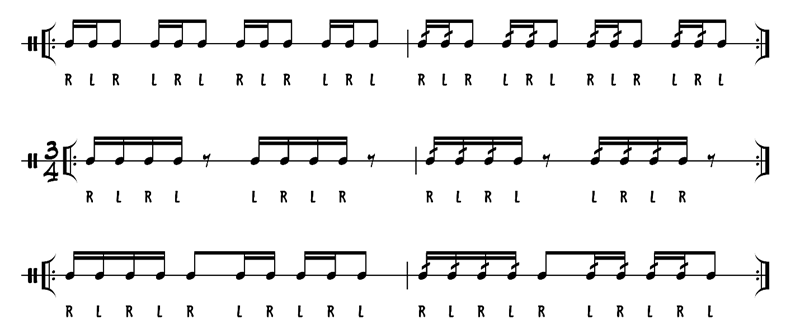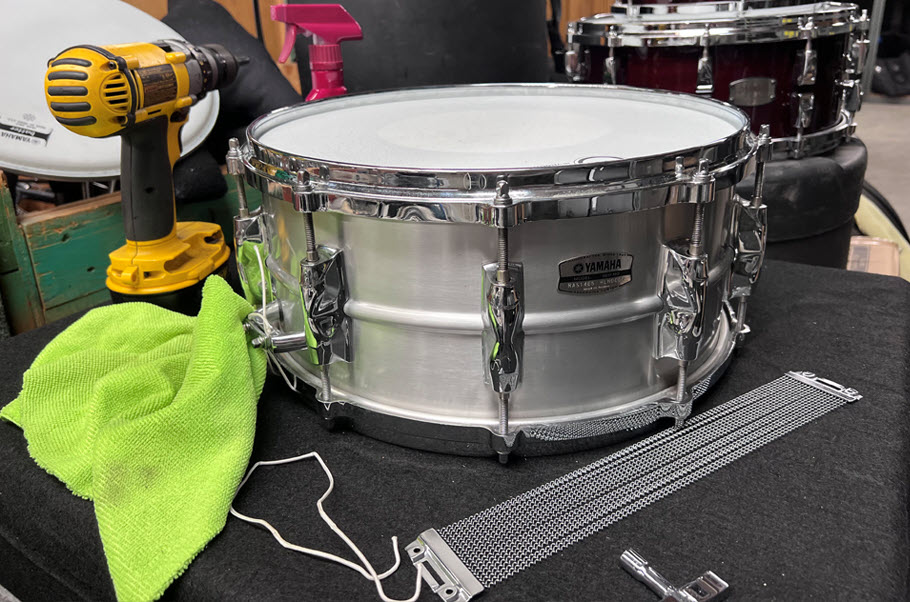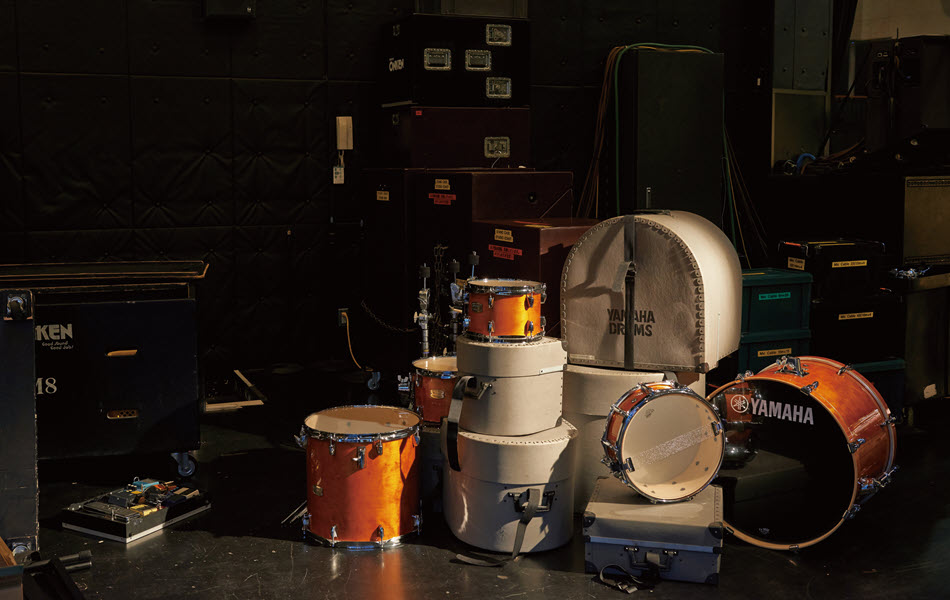How Do You Roll?
Developing your snare drum roll technique.
There are many techniques a percussionist must learn in order to become a well-rounded musician. Fortunately, many of them are applicable on a variety of percussion instruments. The roll is the perfect example.
Maintaining a smooth, clear and clean roll is difficult. This article will provide you with a number of exercises that can be added to your warm-up routine to help improve your roll. Each begins with the foundation (the pattern with which your hands move), followed by a roll. The exercises can be practiced utilizing double, triple or multiple bounce rolls. Also included are exercises that start and end on different hands to improve the technique of the non-dominant hand.
Many educators are of the opinion that the roll is best produced using an arm stroke, where the tips of the sticks stay closer to the drumhead, since this aids in controlling the distance between the bounces of the roll.
Exercise A – Continuous Motion Exercise

We recommend that you use an arm stroke for both the foundation (measures 1 and 3) and the roll exercises (measures 2 and 4). This will help stress the importance of using the arm.
Exercise B – Additive Process Exercise

Click here for more exercises.
Tips
As with any new technique, be sure to practice slowly. Here are some tips to help you succeed:
1) Set aside 10-15 minutes every day to work on your roll technique.
2) Record yourself to make sure you are not learning any bad habits. Compare these recordings weekly to track your progress.
3) Practice in front of a mirror so you can see your hand position.
4) Use a metronome. Start with a slow tempo and increase it gradually.
With regular practice and repetition, you’ll soon see an improvement in your overall sound and technique.
Resources
Looking for additional resources to improve your roll? Check out these books:
1) The Modern Concert Snare Drum Roll by William James
2) The Roll by Emil Shollee
3) Developing Dexterity by Mitchell Peters















